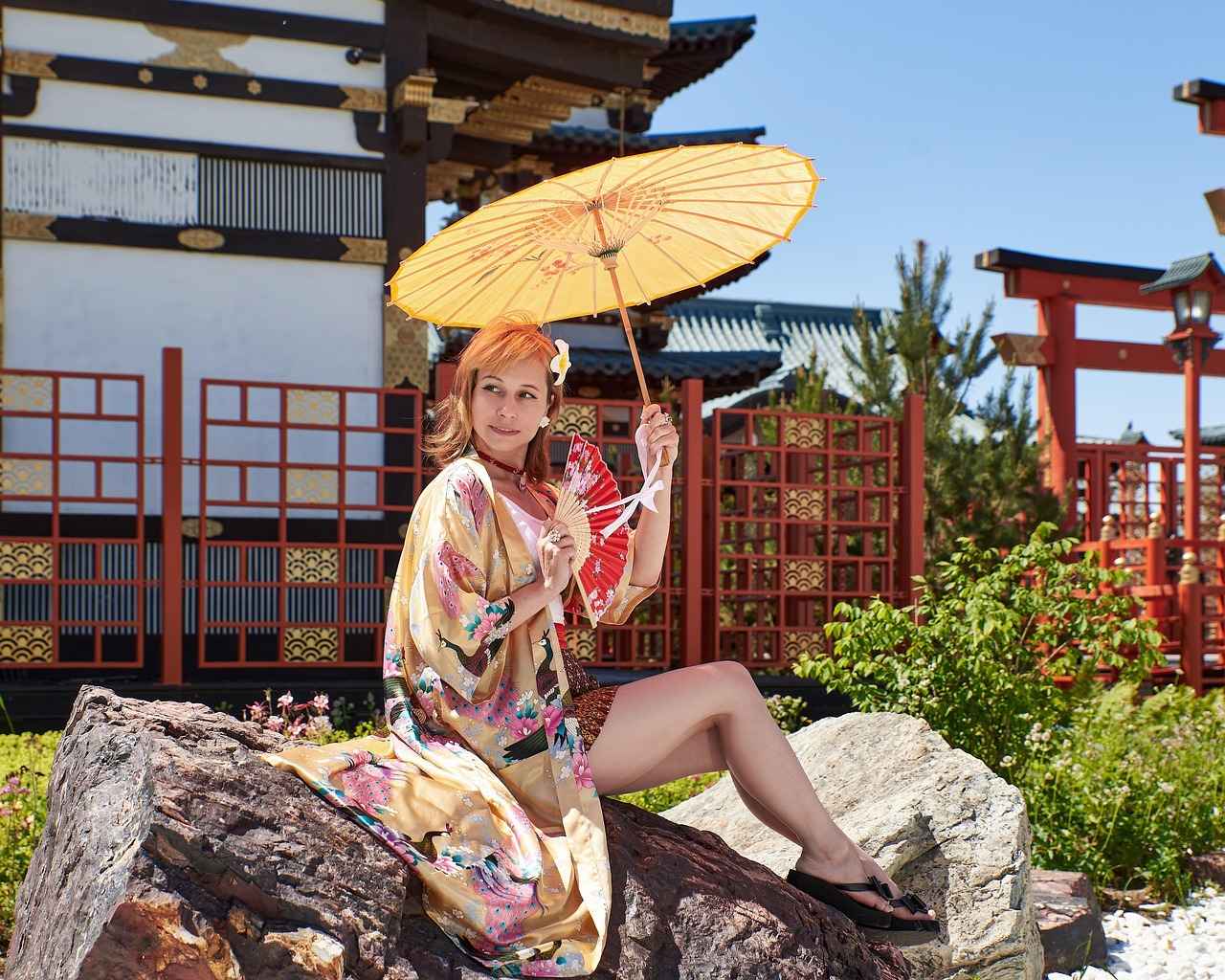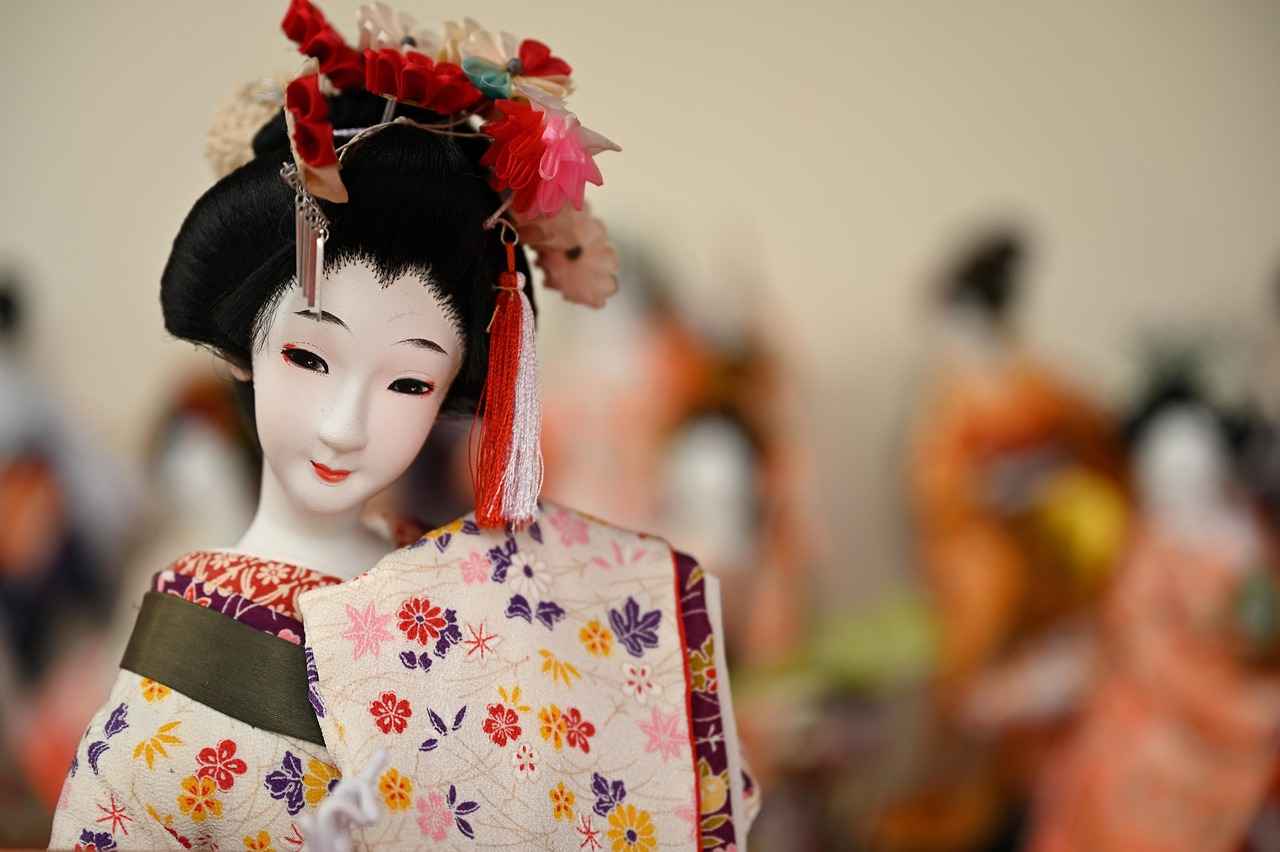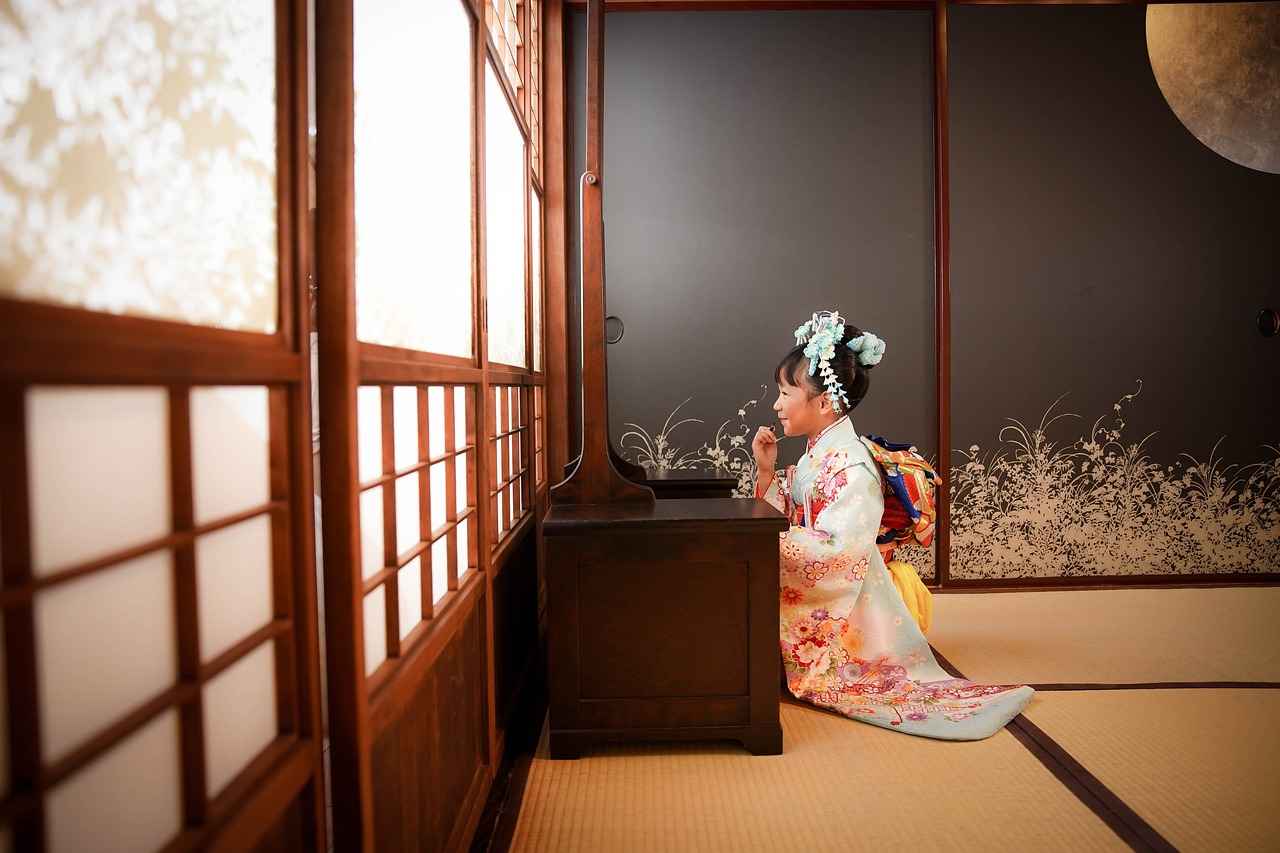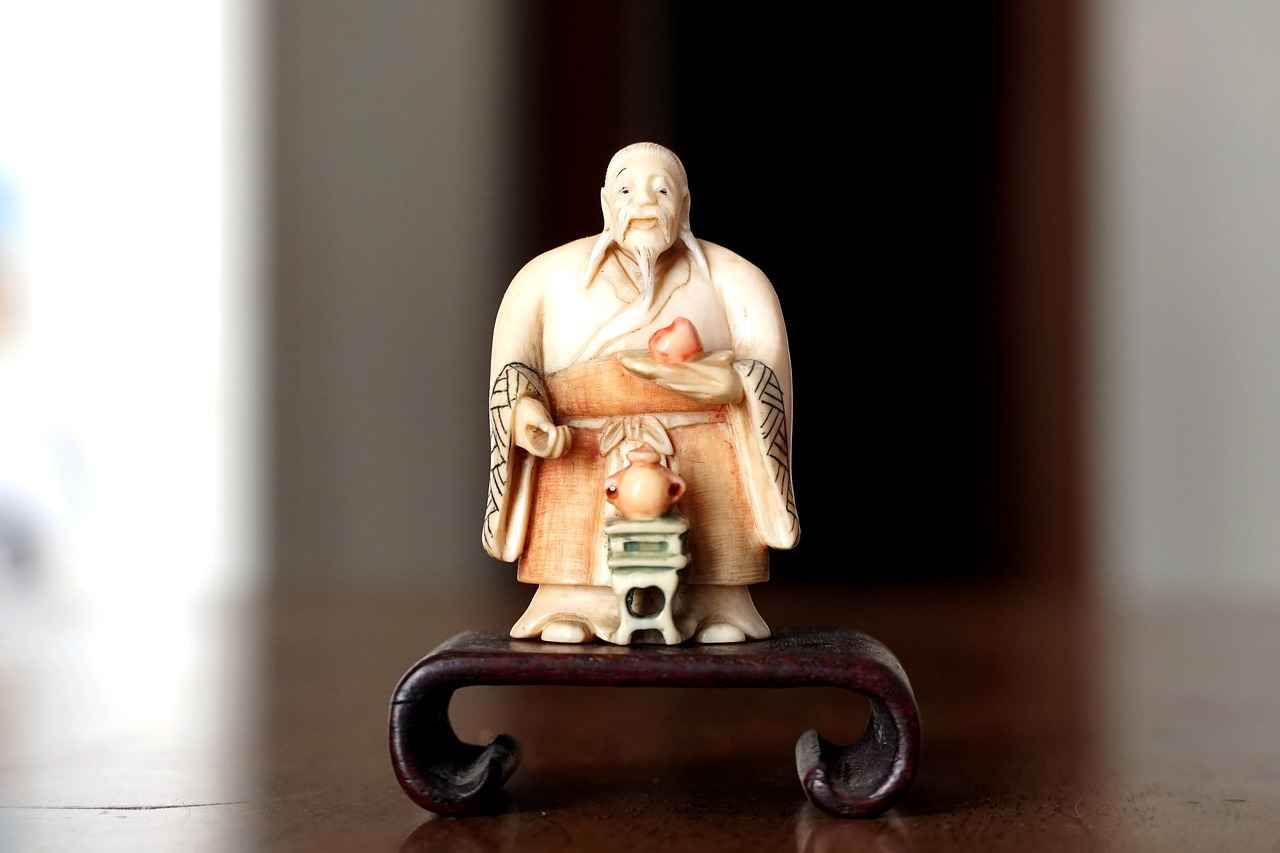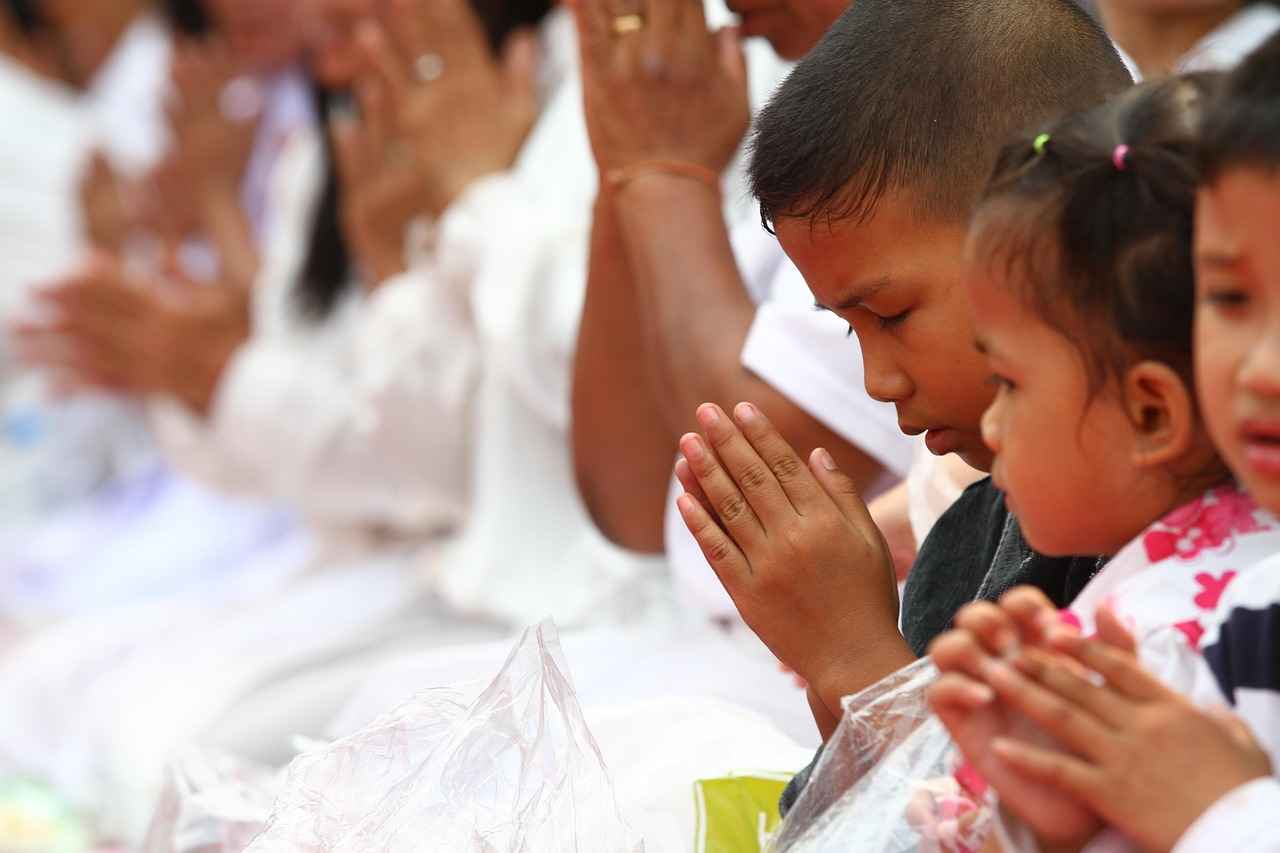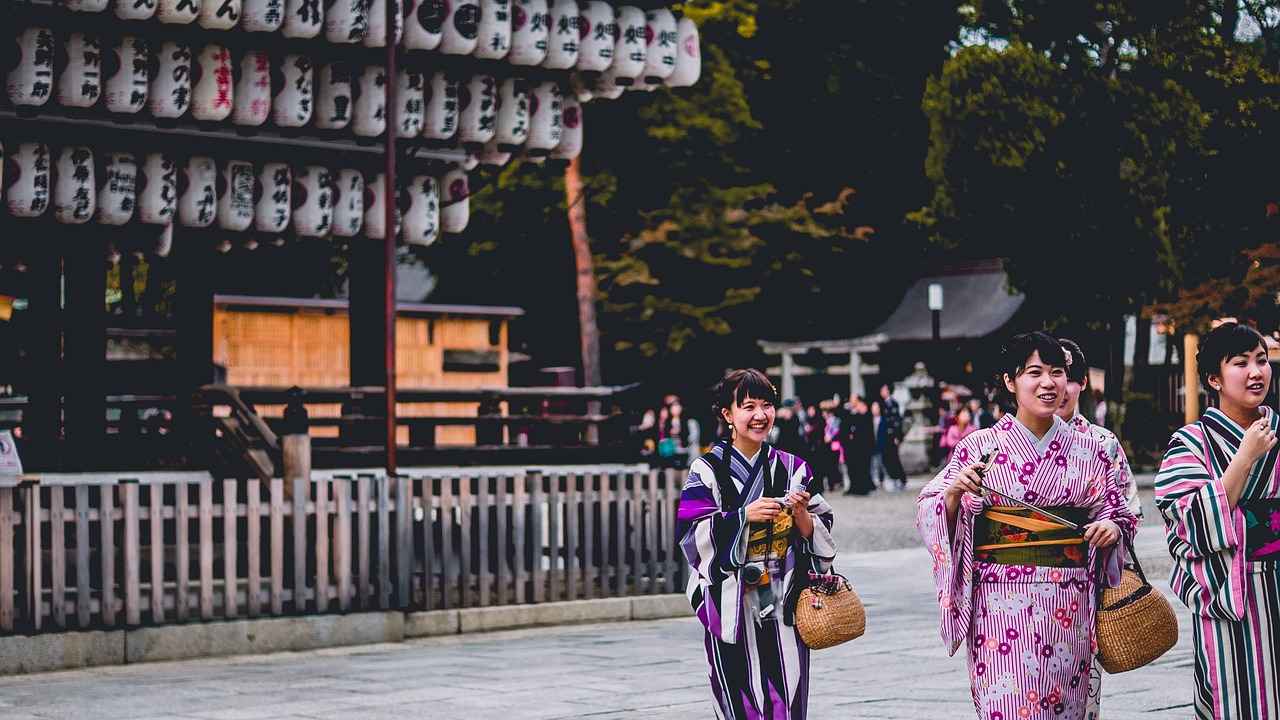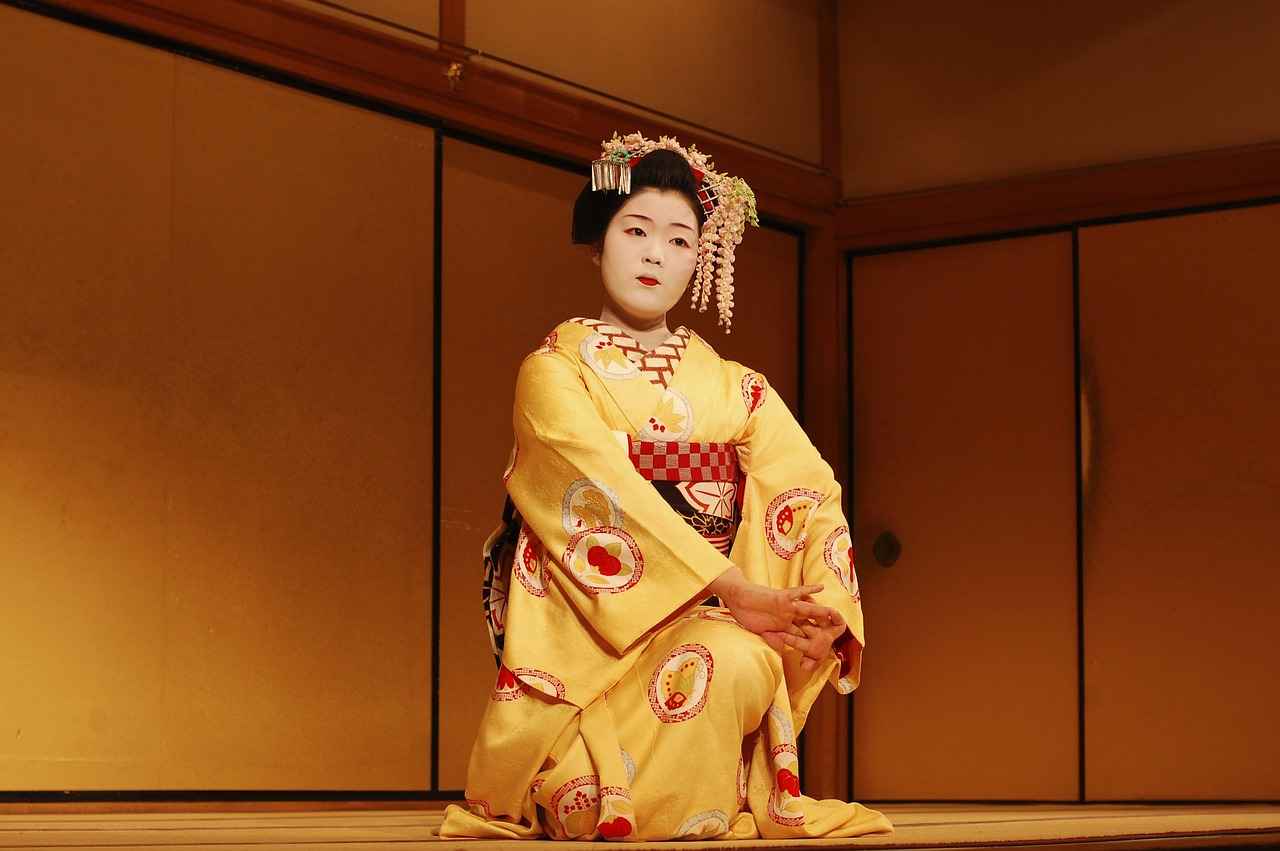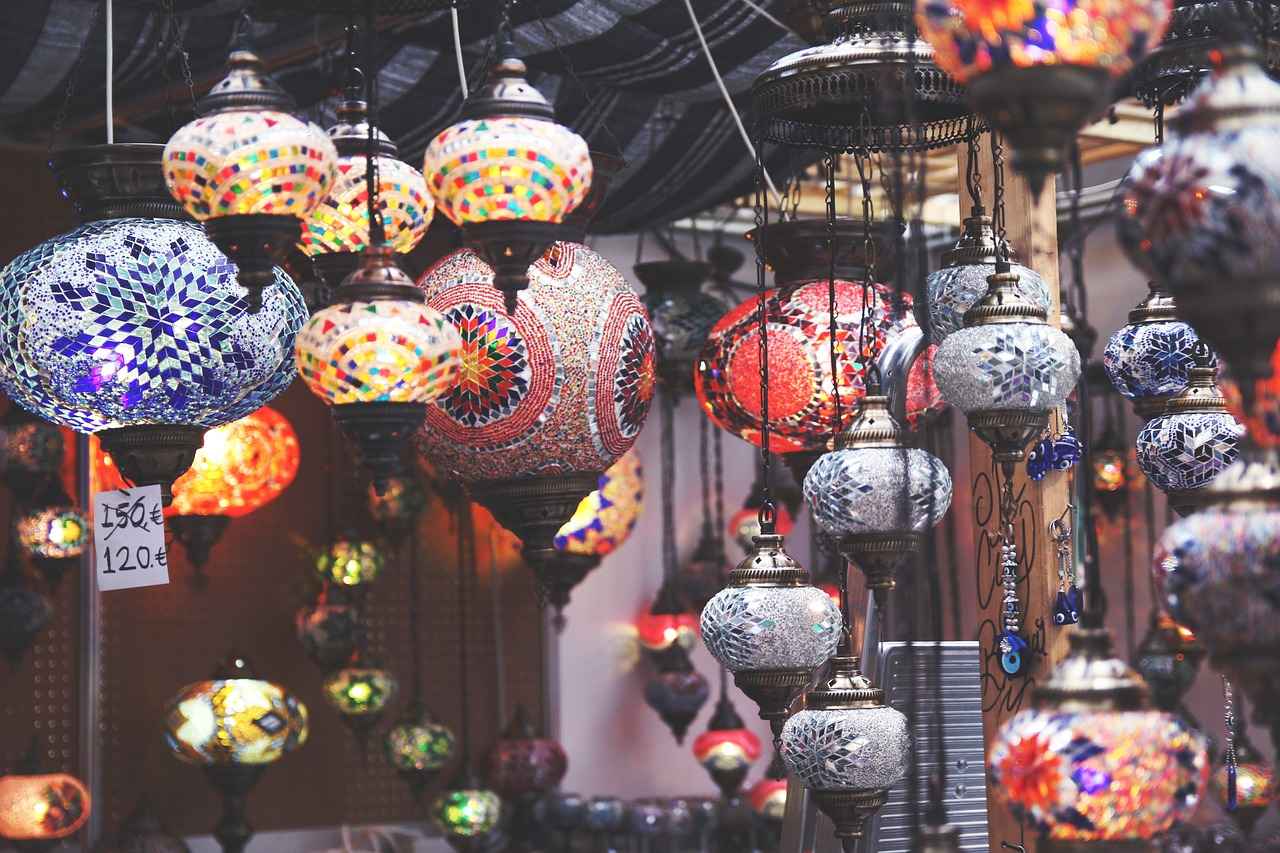This article delves into the rich history, cultural significance, and unique features of the kimono, a traditional Japanese garment. Discover its evolution, styles, and the artistry behind this iconic attire.
The Origins of the Kimono
The kimono has a fascinating origin, tracing back to ancient Japan. Initially designed for practical purposes, it has transformed into a symbol of cultural identity, reflecting the values and traditions of Japanese society over centuries.
Types of Kimonos
Kimonos come in various types, each with its own purpose and occasion. Here, we delve into the different styles:
- Yukata: A casual summer kimono made of lightweight cotton.
- Furisode: A formal kimono characterized by long sleeves, often worn by young women.
- Tomesode: A formal kimono typically worn by married women.
The Art of Kimono Fabric
The fabric used in kimonos plays a crucial role in their beauty and durability. Traditional materials like silk are favored for their luxurious feel, while cotton is commonly used for casual wear.
Kimono Accessories
Accessories are essential in completing the kimono look. Key elements include:
- Obi: A wide belt that secures the kimono.
- Obijime: A decorative cord worn over the obi.
- Haneri: A collar that adds a touch of elegance.
The Cultural Significance of the Kimono Today
Despite modernization, the kimono remains a powerful symbol of Japanese culture, often worn during ceremonies and special occasions. Its influence has even extended into global fashion trends, with designers incorporating kimono elements into their collections.
Conclusion: The Enduring Legacy of the Kimono
The kimono’s rich history and cultural significance make it an enduring symbol of Japan. As we reflect on its evolution, the kimono continues to inspire and connect generations through its beauty and artistry.
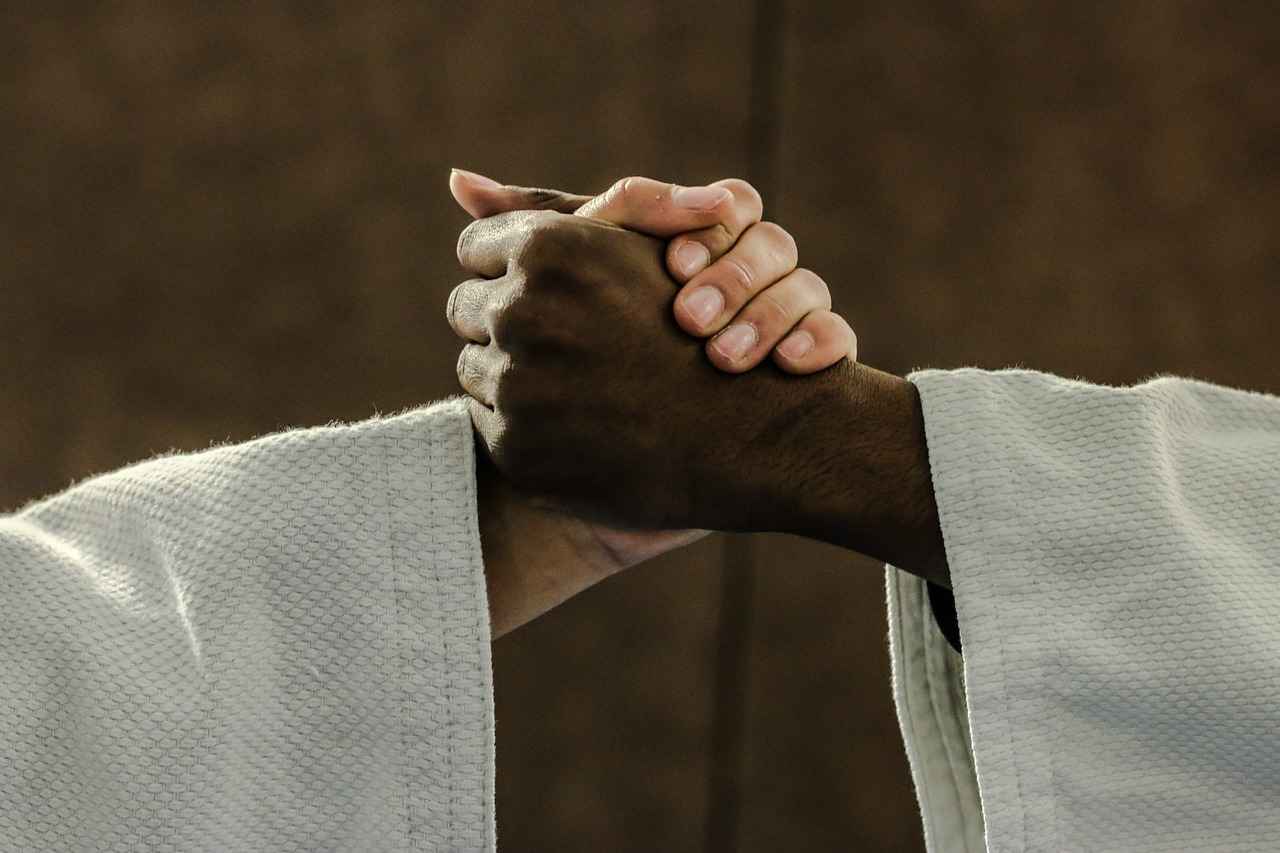
The Origins of the Kimono
The kimono is not just a garment; it is a profound representation of Japanese culture and history. Its origins can be traced back to ancient Japan, where it began as a practical form of clothing designed for everyday use. Over the centuries, the kimono has undergone significant transformations, evolving into a symbol of cultural identity and artistic expression.
Initially, the kimono was a simple, utilitarian outfit made from various fabrics that suited the climate and the needs of the wearer. As time progressed, it became more elaborate, reflecting the social status and personality of the individual. The introduction of different fabrics, colors, and patterns played a crucial role in this evolution. For instance, the use of silk became prominent during the Heian period (794-1185), marking a shift towards more luxurious and ornate designs.
By the Edo period (1603-1868), the kimono had solidified its status as a cultural icon. Different styles emerged, each with its own significance and purpose. The furisode, characterized by its long sleeves, became a symbol of youth and femininity, often worn by unmarried women during special occasions. In contrast, the tomesode, a more formal kimono with shorter sleeves, was typically worn by married women.
| Period | Characteristics |
|---|---|
| Heian Period | Introduction of silk and elaborate designs |
| Edo Period | Emergence of distinct styles and social significance |
Today, the kimono remains a vital part of Japanese culture, worn during significant ceremonies such as weddings and tea ceremonies. It embodies the rich heritage of Japan and continues to inspire designers and artisans worldwide. The journey of the kimono from a practical garment to a revered cultural symbol illustrates the deep connection between clothing and identity in Japanese society.
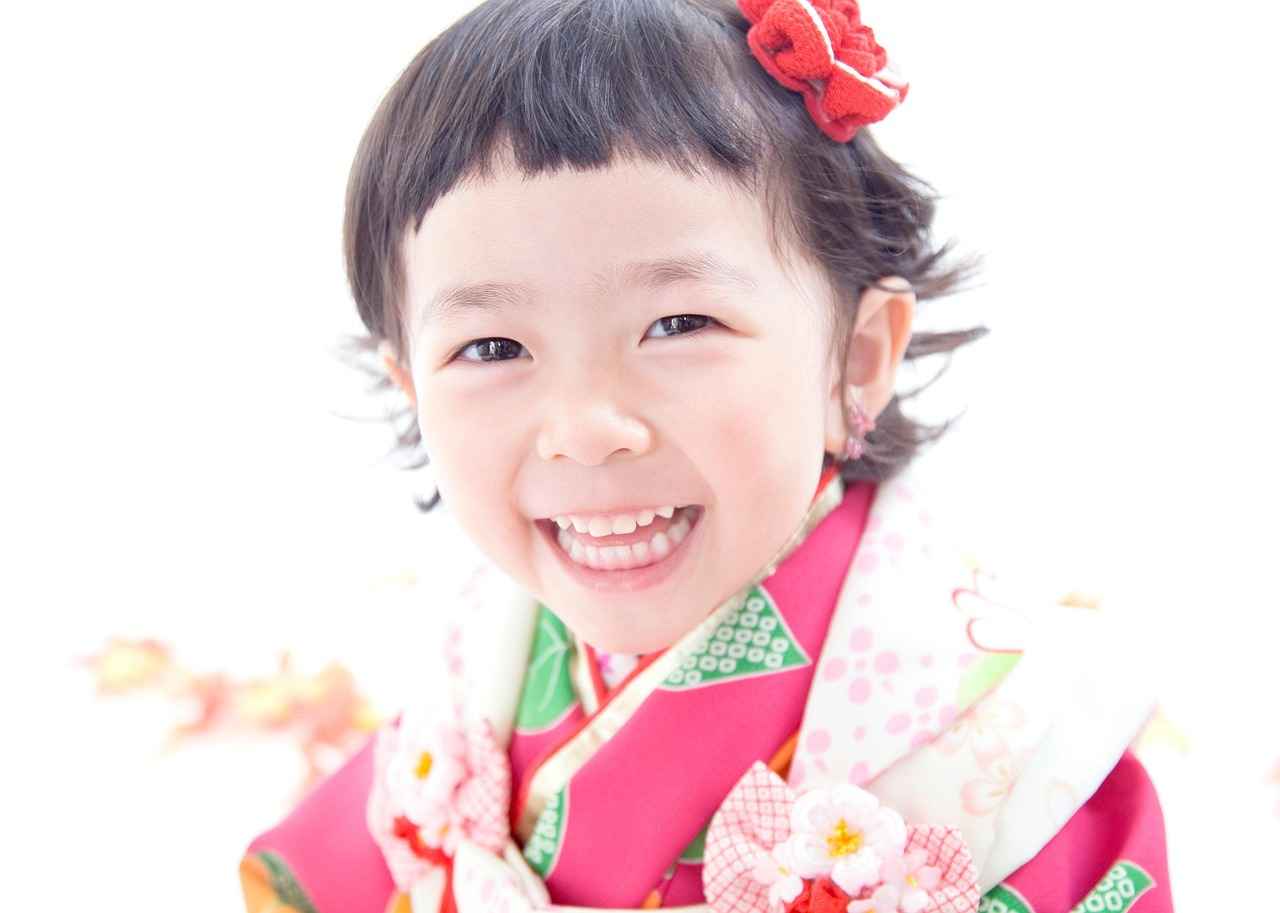
Types of Kimonos
Kimonos are an essential part of Japanese culture, embodying a rich tapestry of history and tradition. Each type of kimono serves a unique purpose and is associated with specific occasions, making them a fascinating subject of study. Here, we will explore the various styles of kimonos, including the yukata, furisode, and tomesode, each with its own distinctive characteristics and significance.
| Type of Kimono | Characteristics | Occasions |
|---|---|---|
| Yukata | Casual, lightweight cotton fabric, often with vibrant patterns | Summer festivals, casual outings |
| Furisode | Long sleeves, usually worn by young women, often colorful | Coming-of-age ceremonies, weddings |
| Tomesode | Shorter sleeves, more subdued colors, often with family crests | Formal occasions, weddings (for married women) |
The yukata is a popular choice during the summer months, made from lightweight cotton that allows for breathability in warm weather. It is commonly worn during hanabi (fireworks) festivals and other summer events, showcasing colorful designs that reflect seasonal themes.
In contrast, the furisode is a formal kimono characterized by its long sleeves, symbolizing youth and elegance. It is primarily worn by young women during significant life events such as seijin shiki (coming-of-age ceremonies) and weddings, where it represents the transition into adulthood.
The tomesode is another formal style, typically adorned with family crests and worn by married women. It is often seen at weddings and other formal gatherings, emphasizing the wearer’s marital status and familial connections.
Understanding the different types of kimonos enhances our appreciation for this traditional garment. Each style not only serves a distinct purpose but also carries deep cultural meanings, reflecting the rich heritage of Japan.
Yukata: The Summer Kimono
The yukata is a traditional Japanese garment that embodies the essence of summer. Made from lightweight cotton, it is designed for comfort and breathability, making it the perfect choice for warm weather. This article explores the history of the yukata, its significance during festivals, and how it contrasts with more formal kimonos.
Historical Background of the Yukata
The origins of the yukata can be traced back to the Edo period (1603-1868), where it was initially worn as a bathrobe after a relaxing soak in an onsen (hot spring). Over time, it evolved into a fashionable summer attire, often adorned with vibrant patterns and colors that reflect seasonal themes.
Yukata in Festivals
During the summer months, yukatas are a common sight at various Japanese festivals (matsuri). These events, which celebrate local culture and traditions, often feature fireworks, traditional games, and food stalls. Wearing a yukata during these festivities is not just about fashion; it symbolizes a connection to cultural heritage and community spirit.
Differences Between Yukata and Formal Kimonos
While both yukata and formal kimonos share similarities, they serve different purposes. Yukatas are typically more casual and easier to wear, often secured with a simple obi (belt). In contrast, formal kimonos, such as the furisode, require more elaborate styling and are worn on special occasions like weddings or tea ceremonies.
Modern Interpretations of Yukata
In contemporary fashion, the yukata has seen a resurgence, with designers blending traditional elements with modern aesthetics. Young people often experiment with colors and patterns, making the yukata a versatile garment that can be styled for various occasions.
Conclusion
The yukata is more than just a summer garment; it represents a rich cultural tradition that has adapted over time. Whether worn at festivals or as a fashion statement, the yukata remains a beloved symbol of Japanese heritage.
Festivals and Yukata
In Japan, yukatas are more than just a traditional garment; they are a vibrant expression of culture and identity, especially during summer festivals. These lightweight, casual kimonos are typically made from cotton, making them ideal for warm weather. The cultural significance of yukata is deeply rooted in Japanese tradition, reflecting both historical and social aspects of the country.
During summer festivals, known as hanabi taikai (fireworks festivals) and matsuri (traditional festivals), wearing a yukata is a cherished practice. The act of donning a yukata signifies participation in communal celebrations, allowing individuals to connect with their heritage and community. This attire is often accompanied by a obi (belt), which is tied around the waist, and various accessories that enhance the overall look.
The patterns and colors of yukatas are particularly noteworthy, as they often feature vibrant floral designs, geometric shapes, and seasonal motifs. These patterns are not merely decorative; they carry meanings and symbolize the beauty of nature. For instance, designs of cherry blossoms signify the arrival of spring, while waves might represent the ocean. Such imagery contributes to the festive atmosphere of the events.
Moreover, the yukata serves as a bridge between generations. Young people often wear contemporary versions that blend traditional styles with modern fashion trends, while older generations might opt for more classic designs. This evolution of yukata styles showcases how tradition can adapt while still honoring its roots.
In conclusion, yukatas play a vital role in Japanese summer festivals, embodying both cultural significance and aesthetic beauty. As these events continue to thrive, the yukata remains a beloved garment that connects individuals to their heritage, making it an enduring symbol of celebration and community.
Modern Yukata Styles
have seen a remarkable transformation, merging the traditional aesthetics of this iconic Japanese garment with contemporary fashion trends. This evolution is particularly evident among young people, who are redefining how yukata is worn and perceived in today’s society.
Historically, the yukata was primarily a casual summer kimono made from lightweight cotton, often worn during festivals and hot weather. However, in recent years, its usage has expanded beyond these traditional boundaries. Today, young fashion enthusiasts are experimenting with vibrant colors, unique patterns, and innovative silhouettes that reflect personal style while paying homage to the garment’s heritage.
- Mixing Modern Fabrics: While traditional yukata are made from cotton, modern versions often incorporate blends with materials like polyester for enhanced comfort and durability.
- Street Style Influences: Young wearers are pairing yukata with contemporary accessories such as sneakers, oversized bags, and even streetwear elements, creating a unique fusion of styles.
- Layering Techniques: The art of layering is becoming popular, with many opting to wear yukata over casual outfits or under jackets, allowing for versatile looks suitable for various occasions.
- Personalization: Customization has become a trend, with individuals adding personal touches through embroidery or unique obi (belts) that reflect their personality.
Social media platforms, especially Instagram and TikTok, play a significant role in promoting these modern yukata styles. Influencers showcase their outfits, inspiring others to embrace this traditional garment in innovative ways. Additionally, events like summer festivals have adapted to these changes, welcoming a new generation of yukata wearers who prioritize both tradition and personal expression.
In conclusion, the modern interpretation of the yukata is a testament to its enduring appeal and adaptability. As young people continue to embrace and reinvent this traditional attire, the yukata remains a vibrant symbol of cultural heritage while evolving to reflect contemporary fashion sensibilities.
Furisode: The Formal Kimono
Furisode kimonos are a stunning representation of Japanese culture, characterized by their long sleeves that can reach up to 100 centimeters in length. These garments are traditionally worn by young women, particularly during significant life events, marking their transition into adulthood.
The importance of the furisode lies not only in its aesthetic appeal but also in the rich traditions associated with its wear. Typically, furisode are donned during Shichi-Go-San, a festival celebrating the growth of children at the ages of three, five, and seven, as well as during coming-of-age ceremonies held when a young woman turns twenty. These occasions symbolize the transition from childhood to adulthood, making the furisode a powerful emblem of cultural identity.
Furisode kimonos are often adorned with intricate designs and vibrant colors, reflecting the wearer’s personality and the occasion’s significance. The patterns can vary widely, from floral motifs to abstract designs, each carrying its own meaning. For instance, cherry blossoms may symbolize beauty and the fleeting nature of life, while cranes can represent longevity and good fortune.
In addition to traditional events, furisode are also worn during weddings, where they signify the beauty and grace of the bride. The ensemble is usually completed with a matching obi, a wide belt that adds to the overall elegance of the outfit. The choice of colors and patterns in both the kimono and obi can convey messages about the wearer’s family background and personal aspirations.
As society evolves, the furisode continues to hold its place in modern Japanese culture. Young women today may choose to wear furisode for graduation ceremonies or other celebratory events, blending tradition with contemporary fashion trends. This enduring legacy highlights the cultural significance of the furisode, ensuring that it remains a cherished garment for generations to come.
| Occasion | Significance |
|---|---|
| Shichi-Go-San | Celebrates childhood growth |
| Coming-of-Age Ceremony | Marks transition to adulthood |
| Weddings | Symbolizes beauty and grace |
In conclusion, the furisode kimono is not just a garment; it is a vibrant expression of Japanese heritage, embodying the values of beauty, tradition, and cultural identity. Its significance transcends time, making it an essential part of Japanese celebrations and a lasting symbol of femininity and grace.

The Art of Kimono Fabric
The fabric used in kimonos is not just a medium; it is a canvas of cultural heritage that embodies the beauty and durability of this traditional garment. The intricacies of kimono textiles reveal a rich tapestry of materials, techniques, and artistry that have been honed over centuries.
Materials Used in Kimono Fabrication
Traditionally, silk has been the fabric of choice for kimonos, prized for its luxurious feel and elegant drape. The sheen of silk enhances the vibrant colors and intricate patterns, making it ideal for formal occasions. In contrast, cotton is often utilized for more casual styles like the yukata, offering breathability and comfort during the warmer months. Each material carries its own cultural significance and is chosen based on the occasion and the wearer’s status.
Techniques in Kimono Fabrication
The artistry involved in creating kimono textiles is reflected in various techniques such as dyeing and weaving. Traditional methods like shibori, a resist-dyeing technique, create stunning patterns that are unique to each garment. Another popular method is yuzen dyeing, which allows for intricate designs to be painted directly onto the fabric. These techniques not only enhance the visual appeal but also tell stories through their patterns.
Preservation of Textile Artistry
In contemporary Japan, there is a growing movement to preserve the traditional methods of kimono fabric production. Artisans and organizations are dedicated to keeping these time-honored techniques alive, ensuring that future generations can appreciate the rich history and craftsmanship behind kimono textiles.
In conclusion, the fabric of a kimono is a testament to the artistry and cultural significance of this iconic garment. From the choice of material to the intricate techniques employed, each kimono is a unique expression of Japanese heritage that continues to inspire and captivate.
Silk vs. Cotton: Material Differences
The choice of fabric in traditional Japanese kimonos is not merely a matter of preference; it reflects a deep-seated cultural significance and practical considerations. Silk and cotton are the two primary materials used in kimono production, each offering unique qualities that cater to different occasions and purposes.
Texture and Appearance
- Silk: Renowned for its luxurious feel and lustrous sheen, silk kimonos are often chosen for formal events and ceremonies. The smooth texture drapes elegantly, enhancing the wearer’s silhouette.
- Cotton: In contrast, cotton kimonos are lightweight and breathable, making them ideal for casual wear, especially during warmer months. While they may lack the shine of silk, modern cotton kimonos often feature vibrant prints and patterns.
Cultural Significance
Silk has been the traditional choice for kimonos for centuries, symbolizing wealth and status. It is often associated with special occasions such as weddings and formal gatherings. On the other hand, cotton kimonos, particularly the yukata, are linked to summer festivals and casual outings, representing a more relaxed aspect of Japanese culture.
Durability and Care
While silk kimonos require delicate handling and careful cleaning, cotton kimonos are more durable and easier to maintain. This practical difference influences the choice of fabric based on the occasion and the wearer’s lifestyle.
Conclusion
In summary, the choice between silk and cotton for kimonos is deeply intertwined with both personal preference and cultural context. Understanding these material differences helps appreciate the artistry and significance of kimonos in Japanese heritage.
Techniques in Kimono Fabrication
The art of kimono fabrication is a remarkable blend of tradition, skill, and creativity. Various techniques contribute to the unique patterns and colors that define kimonos, making each piece a work of art. Among these, shibori and yuzen stand out as traditional methods that showcase the intricacy involved in kimono making.
Shibori: The Art of Tying and Dyeing
Shibori is a Japanese tie-dye technique that involves binding, stitching, or folding fabric before dyeing it. This method creates stunning patterns that are both intricate and beautiful. The process can be labor-intensive, requiring a keen eye for detail and a deep understanding of color application. Each shibori piece is unique, as the way the fabric is manipulated directly influences the final design.
Yuzen: Hand-Painted Elegance
Yuzen is another exquisite technique used in kimono fabric creation, characterized by its hand-painted designs. Originating in Kyoto, this method employs a resist dyeing process, where outlines are drawn on fabric before dyeing. Artisans use natural dyes to create vibrant, colorful patterns that often depict nature, seasonal motifs, or traditional scenes. The meticulous work involved in yuzen makes it a highly respected art form, often resulting in kimonos that are treasured for generations.
Modern Adaptations and Innovations
While traditional techniques like shibori and yuzen remain popular, modern innovations in fabric technology and design have also emerged. Contemporary artisans often blend traditional methods with modern aesthetics, creating unique kimonos that appeal to younger generations. This fusion of old and new not only preserves the cultural heritage of kimono making but also ensures its relevance in today’s fashion landscape.
In conclusion, the techniques used in kimono fabrication, such as shibori and yuzen, are integral to the garment’s beauty and cultural significance. Understanding these methods enhances appreciation for the craftsmanship that goes into creating each kimono, making it not just clothing but a reflection of Japanese artistry and tradition.
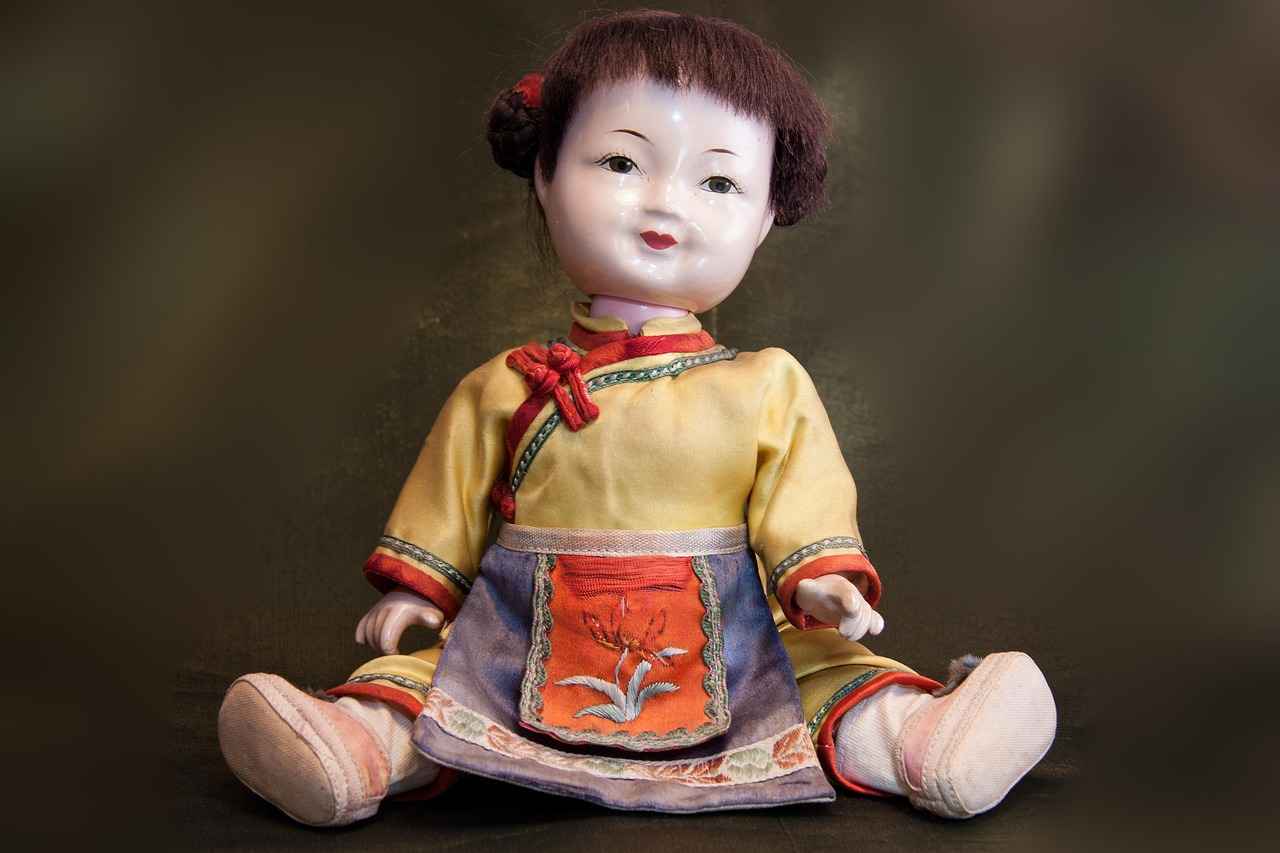
Kimono Accessories
are vital components that enhance the beauty and authenticity of the traditional Japanese garment. Each accessory serves a unique purpose, contributing to the overall aesthetic and cultural significance of the kimono. In this section, we will explore key accessories, including the obi, obijime, and haneri, and discuss how they elevate the kimono look.
- The Obi: The obi is perhaps the most recognizable accessory associated with kimonos. This wide belt not only holds the kimono in place but also acts as a statement piece. The design and style of the obi can vary greatly, from simple and understated to elaborate and ornate, often reflecting the wearer’s personality or status. A well-chosen obi can transform a simple kimono into a stunning ensemble.
- Obijime: This decorative cord is typically worn over the obi, adding an extra layer of detail and sophistication. Made from a variety of materials, including silk and cotton, the obijime can come in different colors and patterns, allowing for personalization. It serves both a functional and aesthetic purpose, ensuring the obi stays in place while enhancing the overall look.
- Haneri: The haneri is a collar worn underneath the kimono’s main collar. Often made from contrasting fabric, it adds a pop of color and can be an expression of personal style. The haneri is particularly important in formal settings, where it can indicate the level of formality and the occasion for which the kimono is worn.
In addition to these primary accessories, other elements such as footwear (geta and zori) and kanzashi (hair ornaments) further complement the kimono outfit. Each accessory not only serves a practical purpose but also embodies the rich cultural heritage of Japan, showcasing the artistry and craftsmanship involved in traditional attire.
In conclusion, kimono accessories are essential in creating a complete and harmonious look. They not only enhance the visual appeal of the kimono but also carry deep cultural meanings, making them indispensable in the art of wearing kimonos.
The Obi: A Central Element
The obi is not just a functional accessory; it is a central element that plays a significant role in the overall aesthetics of a kimono. This wide belt, typically made from luxurious fabrics, serves to hold the kimono securely in place while also adding a touch of elegance and style. In this section, we will explore the various styles of obi and how their designs can reflect the wearer’s personality and status.
There are several types of obi, each with its unique characteristics and intended use. The most common styles include:
- Fukuro Obi: A formal obi that is often worn for special occasions, featuring intricate patterns and designs.
- Haneri Obi: A simpler, more casual version that is typically used for everyday wear.
- Maru Obi: The most formal type, usually worn by brides or during ceremonies, known for its elaborate designs.
The design of an obi can tell a lot about the wearer. For instance, a vibrant and colorful obi might indicate a youthful spirit and a desire to stand out, while a more subdued and elegant design could reflect a sense of tradition and formality. Additionally, the choice of fabric, whether it be silk or cotton, plays a crucial role in conveying the wearer’s social status.
Moreover, the way an obi is tied—whether in a simple knot or a more complex bow—can also signify different meanings. For example, the taiko musubi (drum knot) is often used for celebratory occasions, while the kanto musubi (east knot) is more common for everyday wear.
In conclusion, the obi is much more than a mere accessory; it is an essential part of the kimono that encapsulates the wearer’s identity and cultural heritage. Through its various styles and designs, the obi continues to be a vital expression of personal style and tradition in Japanese culture.
Footwear and Other Accessories
When it comes to the traditional kimono, every detail counts, and this includes the footwear and accessories that accompany this iconic garment. In Japanese culture, items such as geta and zori not only serve a practical purpose but also enhance the overall aesthetic of the kimono. Understanding the significance of these elements offers deeper insights into their cultural importance.
Geta: The Traditional Wooden Sandal
Geta are traditional wooden sandals that elevate the wearer above the ground, providing a unique style and functionality. Often worn with formal kimonos, they feature a raised platform and a thong that goes between the big toe and the second toe. The sound they make while walking is distinctive and adds to the overall experience of wearing a kimono.
Zori: The Elegant Flip-Flop
On the other hand, zori are flat sandals made from materials like rice straw, fabric, or plastic. They are typically worn with more casual kimonos or during warm weather. Zori come in various designs and colors, allowing the wearer to express their personal style while maintaining a traditional look.
Importance of Accessories
In addition to footwear, several accessories complete the kimono ensemble. The obi (belt), obijime (cord), and haneri (collar) are essential elements that not only secure the kimono but also add layers of elegance. Each accessory serves a specific function while also reflecting the wearer’s personality and status.
- Obi: A wide belt that is tied around the waist, often featuring intricate designs.
- Obijime: A decorative cord that further secures the obi and adds visual interest.
- Haneri: A separate collar that can be changed to match the kimono, enhancing its versatility.
Overall, the footwear and accessories associated with the kimono are not mere afterthoughts; they are integral to the outfit’s cultural significance. They exemplify the balance between form and function, tradition and modernity, making the kimono a truly remarkable garment in Japanese heritage.

The Cultural Significance of the Kimono Today
Despite the rapid pace of modernization, the kimono continues to be a profound symbol of Japanese culture. This traditional garment not only represents Japan’s rich heritage but also plays a significant role in contemporary society. Its relevance is evident in various facets, including ceremonial practices and the world of fashion.
In ceremonial contexts, the kimono holds a special place. It is often worn during important life events such as weddings, graduations, and traditional festivals. For instance, the shichi-go-san festival, which celebrates the growth of children, sees many young girls donning the vibrant furisode, characterized by its long sleeves and elaborate designs. Similarly, during tea ceremonies, participants often wear kimonos to honor the tradition and create an atmosphere of respect and elegance.
Moreover, the kimono has found its way into modern fashion, influencing designers both in Japan and worldwide. Many contemporary fashion houses incorporate kimono elements into their collections, blending traditional aesthetics with modern silhouettes. This fusion not only revitalizes interest in the kimono but also promotes cultural appreciation on a global scale.
Young people in Japan are increasingly embracing the kimono, often wearing it for casual outings or special occasions. This resurgence is partly fueled by social media, where influencers showcase their unique styles, encouraging a new generation to appreciate this timeless garment. The yukata, a casual summer kimono, is particularly popular during festivals, allowing wearers to express their individuality through vibrant colors and patterns.
Efforts to preserve the art of kimono-making are also vital in maintaining its cultural significance. Artisans and organizations are dedicated to keeping traditional techniques alive, ensuring that future generations can experience the beauty of this iconic attire.
In conclusion, the kimono remains a vital part of Japanese identity, seamlessly bridging the past and present. Its enduring legacy is a testament to its cultural importance, making it not just a garment, but a symbol of Japan’s rich history and artistry.
Kimono in Modern Fashion
The influence of kimonos has significantly shaped global fashion trends. Designers worldwide are increasingly incorporating kimono elements into their collections, reflecting a blend of traditional aesthetics and contemporary styles. This article explores how these influences manifest in modern fashion and the cultural implications of this trend.
The kimono, a traditional Japanese garment, is celebrated for its unique silhouette and intricate patterns. In recent years, fashion designers have drawn inspiration from the kimono’s flowing lines and vibrant textiles, leading to the creation of hybrid garments that pay homage to this iconic attire. Fashion houses such as Gucci and Louis Vuitton have introduced kimono-inspired pieces, integrating elements like wide sleeves and luxurious fabrics into their collections.
| Designer | Collection | Kimono Elements |
|---|---|---|
| Gucci | Spring/Summer 2020 | Wide sleeves, floral patterns |
| Louis Vuitton | Fall/Winter 2021 | Layered silhouettes, obi-inspired belts |
| Issey Miyake | Resort 2022 | Innovative draping, kimono motifs |
This trend raises important questions about cultural appropriation. While the adoption of kimono elements can promote appreciation for Japanese culture, it also risks commodifying traditional attire. Designers must navigate this fine line, ensuring that they honor the garment’s heritage rather than merely exploiting its aesthetic appeal. Collaboration with Japanese artisans can foster authenticity and respect, bridging the gap between cultures.
Moreover, the global fascination with kimonos has sparked renewed interest in traditional Japanese craftsmanship. As more designers incorporate kimono elements, there is a growing demand for artisans skilled in kimono-making techniques, ensuring that these practices are preserved for future generations. The kimono’s influence in modern fashion serves not only as a testament to its timeless beauty but also as a reminder of the importance of cultural sensitivity in an increasingly interconnected world.
In conclusion, the kimono’s integration into modern fashion signifies a broader trend of cultural exchange. As designers continue to explore and reinterpret this traditional garment, it is essential to approach such influences with respect and an understanding of their cultural significance.
Preserving Kimono Traditions
is a vital endeavor that encapsulates the essence of Japanese culture and craftsmanship. As the world evolves and modern fashion trends emerge, the efforts to maintain the artistry and heritage of kimono-making are more crucial than ever. This section highlights the dedicated organizations and artisans committed to ensuring that this beautiful cultural legacy is passed down to future generations.
Across Japan, numerous organizations and artisans are tirelessly working to keep the tradition of kimono-making alive. These groups focus on various aspects, from teaching the intricate techniques involved in kimono production to promoting awareness of its cultural significance. For instance, the Japanese Kimono Association plays a pivotal role in organizing workshops and exhibitions that showcase the beauty and craftsmanship of kimonos.
Artisans, often referred to as kimono craftsmen, possess a wealth of knowledge passed down through generations. They specialize in various techniques, including dying, weaving, and stitching. Each kimono is a testament to their skill, with unique patterns and colors that tell stories of tradition and artistry. Many artisans also engage in collaborative projects with contemporary designers, merging traditional practices with modern aesthetics.
Furthermore, educational institutions have begun to incorporate kimono-making into their curricula, ensuring that young people are exposed to this cultural art form. Workshops and classes are now offered in various regions, allowing participants to learn about the history, significance, and techniques of kimono-making. This not only preserves the craft but also fosters a new appreciation for traditional Japanese attire among younger generations.
In conclusion, the ongoing efforts to preserve kimono-making traditions are essential for maintaining Japan’s cultural heritage. Through the dedication of organizations, artisans, and educational initiatives, the beauty and significance of the kimono will continue to thrive, inspiring future generations to embrace and celebrate this iconic garment.
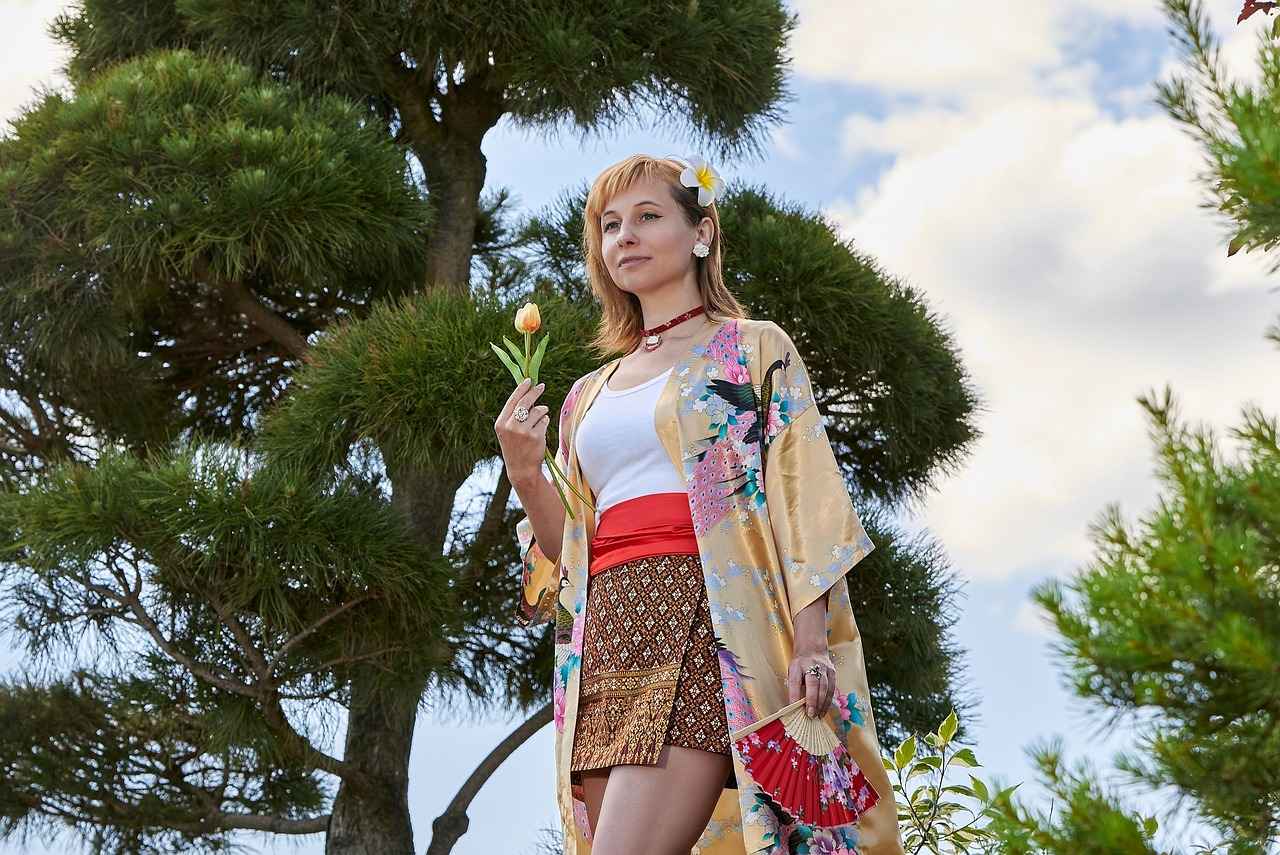
Conclusion: The Enduring Legacy of the Kimono
The kimono, with its rich history and cultural significance, stands as an enduring symbol of Japan. This traditional garment, characterized by its elegant design and intricate craftsmanship, has evolved over centuries, reflecting the changing dynamics of Japanese society. From its origins as practical attire to its current status as a cultural icon, the kimono embodies the beauty and artistry of Japanese heritage.
Historically, the kimono can be traced back to the Heian period (794-1185), where it began as a simple garment. As time progressed, it transformed into a more complex outfit, adorned with elaborate patterns and made from luxurious fabrics. Each kimono tells a story, often representing the wearer’s status, age, and even the season. For instance, the furisode, a kimono with long sleeves, is traditionally worn by young women during special occasions, symbolizing their youth and potential.
In contemporary Japan, the kimono continues to hold great significance. It is worn during important ceremonies such as weddings, tea ceremonies, and festivals, linking generations through shared cultural practices. The yukata, a casual summer version of the kimono, is particularly popular during summer festivals, showcasing vibrant colors and patterns that celebrate the season.
As we reflect on the kimono’s evolution, it is evident that this garment is more than just clothing; it is a representation of Japanese identity and tradition. The ongoing efforts to preserve kimono-making techniques and promote their use in modern fashion highlight the garment’s adaptability and enduring appeal. The kimono inspires not only those who wear it but also those who admire its beauty, connecting generations through its rich legacy.
Frequently Asked Questions
- What is the significance of the kimono in Japanese culture?
The kimono is more than just a piece of clothing; it represents Japanese heritage and identity. Traditionally worn during important ceremonies and festivals, it symbolizes respect, elegance, and cultural pride.
- How do I choose the right type of kimono for an occasion?
Choosing the right kimono depends on the event. For casual outings, a yukata is perfect, while a formal event calls for a furisode or tomesode. Consider the season and occasion to select the appropriate style.
- Are kimonos still worn today?
Absolutely! While kimonos are less common in everyday wear, they are still popular during festivals, weddings, and traditional ceremonies. Many modern interpretations also blend kimono elements into contemporary fashion.
- What materials are kimonos made from?
Kimonos are typically made from silk for formal wear, while cotton is used for casual styles like yukatas. The choice of fabric affects the kimono’s appearance, feel, and cultural significance.
- What accessories are essential when wearing a kimono?
Key accessories include the obi (belt), obijime (cord), and haneri (collar). Footwear like geta or zori also plays a crucial role in completing the traditional look.
